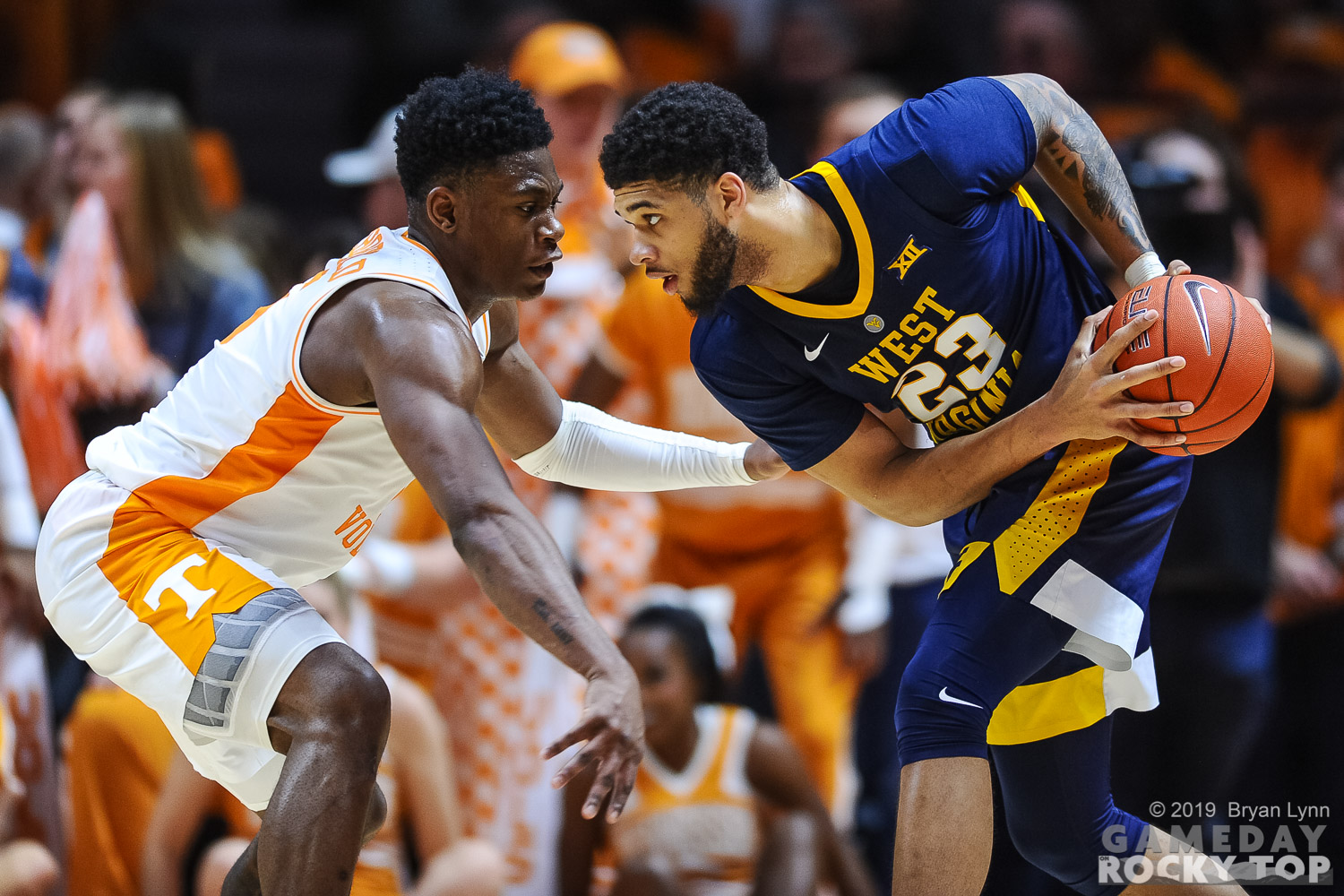As the Vols continue to roll over their opponents, it’s becoming more and more common to hear commentators ask the question, “What is Tennessee’s weakness?” That may not be a fair question for a team that has only lost one game in overtime on a neutral floor to (at the time) a great team, but asking what they can improve on is a very good question. And the answer to that question is defensive efficiency. For now, it appears to be what is keeping Tennessee from an overall No. 1 seed.
The Vols — ranked No. 1 in the polls for the third week in a row — are also still a No. 1 seed in the latest Bracket Matrix. As we’ve said before, this is important because, as a general rule, No. 1 seeds do indeed tend to do significantly better in the NCAA Tournament than do No. 2 seeds.
In the Matrix, though, the Vols are not currently the No. 1 seed overall, but the third No. 1 seed, behind Duke and Virginia (and just ahead of Gonzaga.) Jockeying for the overall No. 1 seed could be important because the regions themselves are seeded, meaning if all No. 1 seeds advanced to the Final Four, the best-against-worst principle would still apply. In other words, the first No. 1 seed would play the last No. 1 seed, and the second would play the third. By the time you get to the Final Four, such small differences probably don’t matter nearly as much as getting a 1-seed wherever it might be, but still, you want every advantage you can get.
Note that the Bracket Matrix is just a compilation of the various guesses by the various experts on the internet. The current NET Rankings identify the same teams, but in a different order: Virginia, Gonzaga, Duke, and Tennessee.
As we’ve written before, the NCAA NET Rankings are replacing the RPI this year and are leaned on heavily by the Selection Committee. The NET Rankings include the following factors: Team Value Index, Net Efficiency, Winning Percentage, Adjusted Win Percentage, and Scoring Margin. Check out our post What are the NET rankings in men’s basketball to learn more about each of those factors.
So, what does Tennessee need to accomplish to earn that coveted overall No. 1 seed? Let’s look at the various factors that go into the NET Rankings and those that are found on the Team Sheets to see where the Vols might be currently coming up short compared to the others in the race.
| Algorithms | Records | ||||||||||
| NET | KPI | SOR | BPI | POM | SAG | Overall | Q1 | Q2 | Q3 | Q4 | |
| Virginia | 1 | 3 | 1 | 1 | 1 | 2 | 20-1 | 5-1 | 5-0 | 3-0 | 7-0 |
| Gonzaga | 2 | 11 | 8 | 3 | 3 | 3 | 21-2 | 4-2 | 3-0 | 4-0 | 10-0 |
| Duke | 3 | 2 | 2 | 2 | 2 | 1 | 19-2 | 5-1 | 5-1 | 5-0 | 4-0 |
| Tennessee | 4 | 8 | 3 | 5 | 5 | 6 | 19-1 | 4-1 | 6-0 | 4-0 | 5-0 |
We’ll take a closer look at the details behind Tennessee’s NET Ranking later, but for now, note that it’s the algorithms on the team sheets that don’t like the Vols as much as the other teams on this list.
Apart from the most-important NET Rankings, the five algorithms tracked are the KPI, ESPN’s BPI and SOR, KenPom (“POM”), and Jeff Sagarin (“SAG”). The Vols are No. 8 in the KPI, No. 5 in the BPI and KenPom, and No. 6 in Jeff Sagarin.
At first, you’d think that something in the KPI would be the place to look, but Gonzaga is ranked even lower in the KPI than Tennessee and is still ahead of them in the NET.
The answer
Most of these algorithms are mostly-closed, closely-guarded secret systems, so you have to do a little digging and make a few assumptions along the way as you look for answers. In the BPI, the only data columns in addition to the final calculation are offensive and defensive BPIs. Tennessee is ranked 2nd in offensive BPI, but they are ranked all the way down at 21st in defensive BPI.
KenPom’s data appears to support the idea that it’s Tennessee’s defensive resume that is making it look less attractive to the machines than the other teams vying for the overall No. 1 seed. Michigan State, which has four losses to the Vols’ one loss in overtime on a neutral floor, is ahead of Tennessee in the KenPom rankings, presumably because the Spartan’s offensive and defensive efficiency rankings are both in the Top 10, while Tennessee’s defensive efficiency is only ranked No. 45.
So, the working theory is that if the Vols want the overall No. 1 seed, they need to improve their defensive efficiency. We’ll take a look at what they can do to make that happen in a later post.
